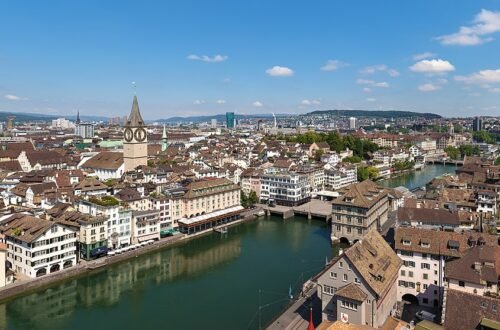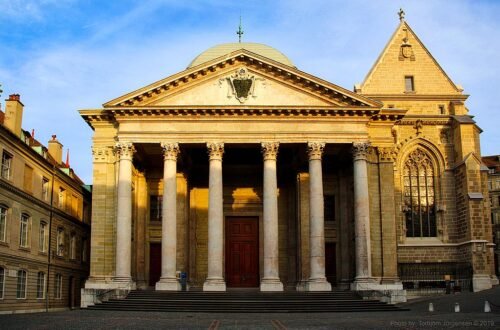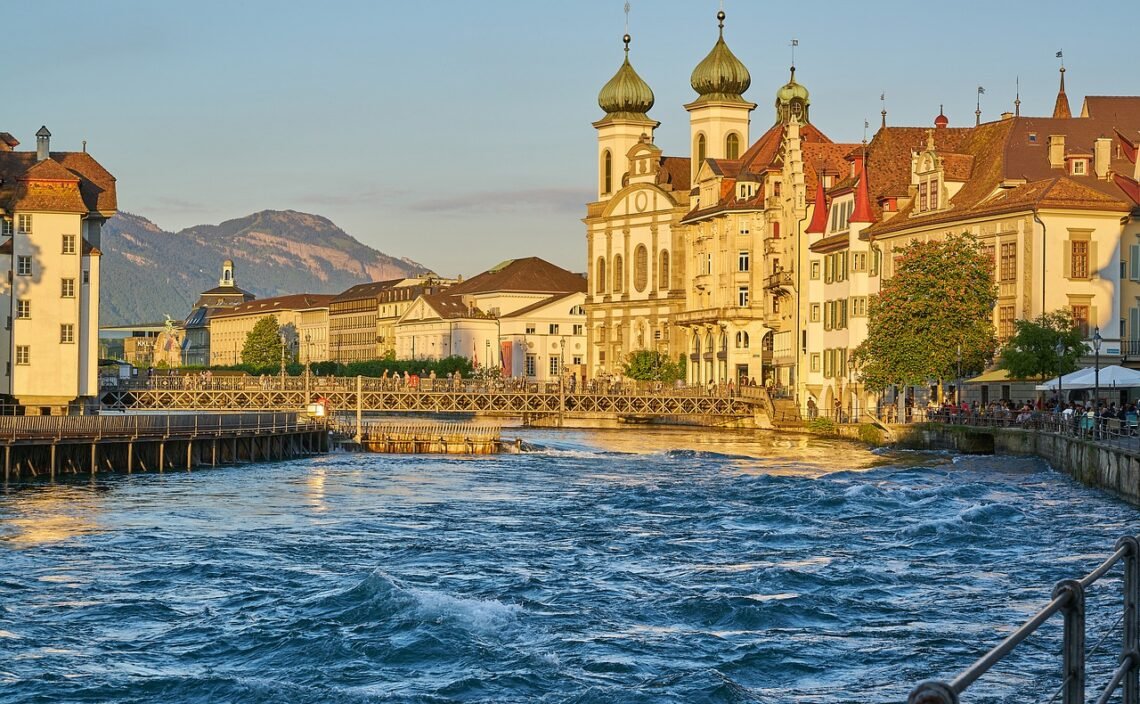
15 Things to Visit in Lucerne (Switzerland)
Why Lucerne is so popular with tourists is obvious. The city is situated next to Lake Lucerne and is surrounded by breathtaking alpine scenery. Whether you wish to take a paddle steamer ride or scale a formidable Alpine summit like Pilatus or Rigi, the lake and the mountains are both nearby. On the historic, traffic-free lanes of the Old Town, which feature frescoes on the facades of medieval guildhalls, there is also plenty to keep you busy. You’ll venture over medieval wooded bridges with paintings in their ceiling vaults, and scale a line of powerful defensive towers. See the Lion Monument for Louis XVI’s slaughtered Swiss Guard and a park of glacial potholes created during the last ice age for more modern wonders. Let’s examine the top activities in Lucerne:
- Mount Pilatus
- Old Town
- Lake Lucerne
- Swiss Museum of Transport
- Chapel Bridge
- Rosengart Collection
- The Lion Monument
- Glacier Garden
- Musegg Wall
- Hofkirche
- Richard Wagner Museum
- Jesuit Church
- Lucerne Culture and Congress Centre
- Reuss River Sights
- Bourbaki Panorama
Mount Pilatus
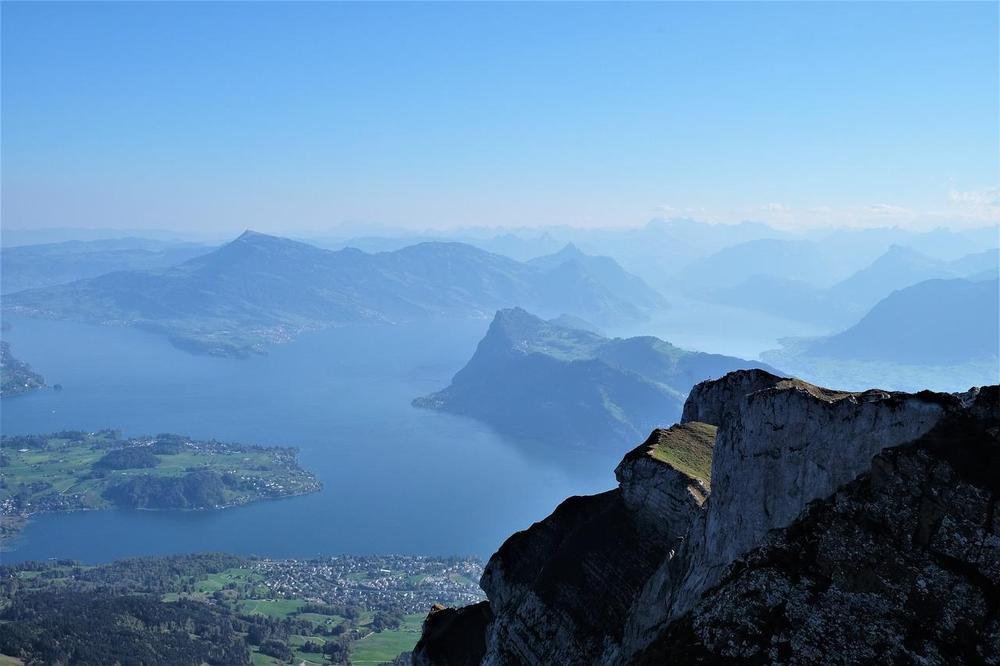
It’s tough to avoid being mesmerized by this 2,128-meter mountain from Lucerne’s vantage point. The peak is steeped in folklore and has the nickname “Dragon Mountain” after a medieval legend claimed it was inhabited by dragons with healing powers. Even though going to the summit is always exciting, it could not be more convenient. A unique loop called the Goldene Rundfahrt (Golden Tour), which departs from Lucerne by paddle boat in the summer, has been designed. You will ride the world’s steepest cogwheel railway after disembarking, with a maximum grade of 48%. Following your awe of the surroundings, you’ll board the brand-new “Dragon Ride” aerial cableway before riding a gondola cableway back down.
Old Town
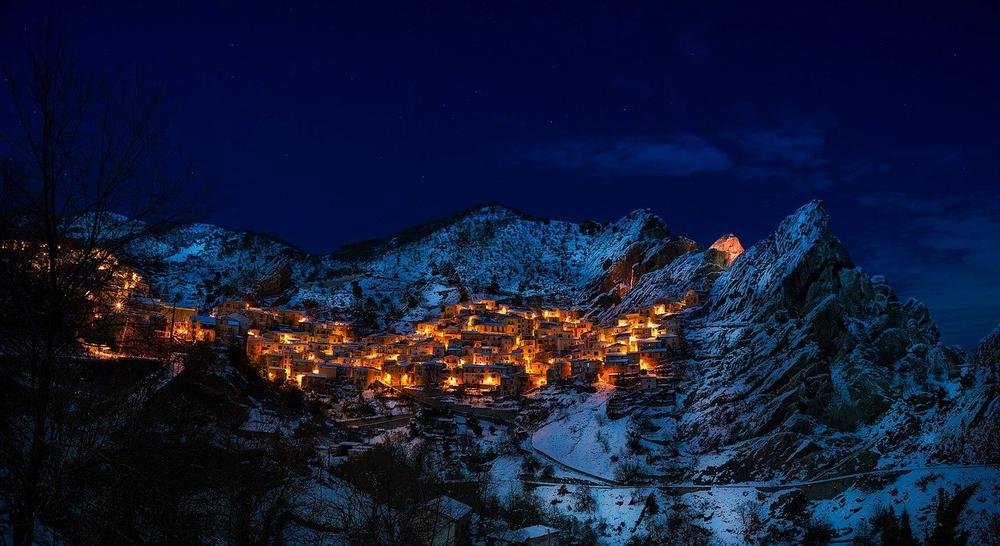
Spend as much time as you can wander through Lucerne’s old town on the right bank of the Reuss. There are several squares connected by cobblestone shopping alleys and boxed in by tall painted buildings. All of the old centres are free of traffic, leaving it for the hordes of shoppers and sightseers. Weinmarkt is the obligatory starting point and is walled by medieval guildhalls, some with decorative painted facades. The Renaissance Altes Rathaus (Old Town Hal), constructed at the beginning of the 17th century and featuring magnificent arcades on the ground level, is located not far from Kornmarkt.
Lake Lucerne
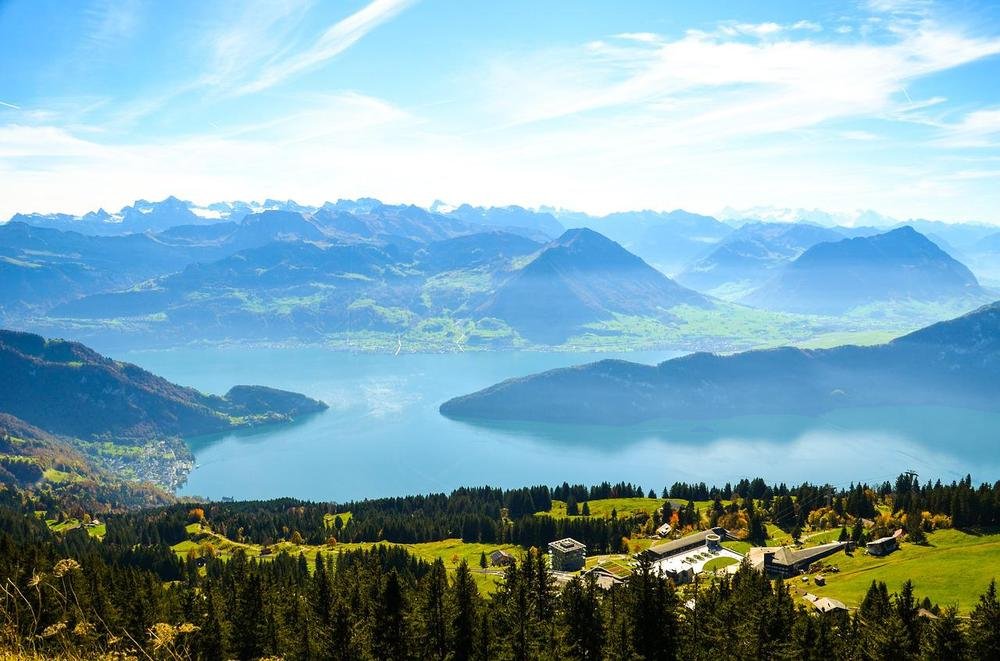
Lake Lucerne, also referred to as the “Lake of the Four Cantons,” is a magnificent body of water with an intriguing shape that beckons exploration. There are magnificent mountains on both sides of the lake, which has four sharply angled arms. The city of Lucerne is located in the northwest corner, and you can head to the Luzern Bahnhofquai to board one of five paddle steamers from the early 20th century for a lake cruise. On land, Lucerne’s waterfront neighbourhoods underwent a reorganization in the 1880s to better utilize the scenery. You may admire the lake and mountain peaks like Pilatus and Rigi from the Nationalquai and Schweizerhofquai, two elegant, leafy promenades that are bordered by mansions.
Swiss Museum of Transport
.jpg)
There is much more to Switzerland’s most popular museum than merely a collection of automobiles. This is a self-contained universe of transportation in the Verkehrshaus der Schweiz near the river. There are 30 aircraft, 30 trains, including Switzerland’s first diesel locomotive, and the astounding Autotheater, where a variety of vehicles from various eras are displayed six high on shelves like dolls. Aside from the vehicles, there is also a freshly renovated planetarium, the country’s first IMAX theatre, a 1:20,000 scale image of Switzerland seen from space, and a brand-new Swiss Chocolate Adventure for chocolate lovers.
Chapel Bridge
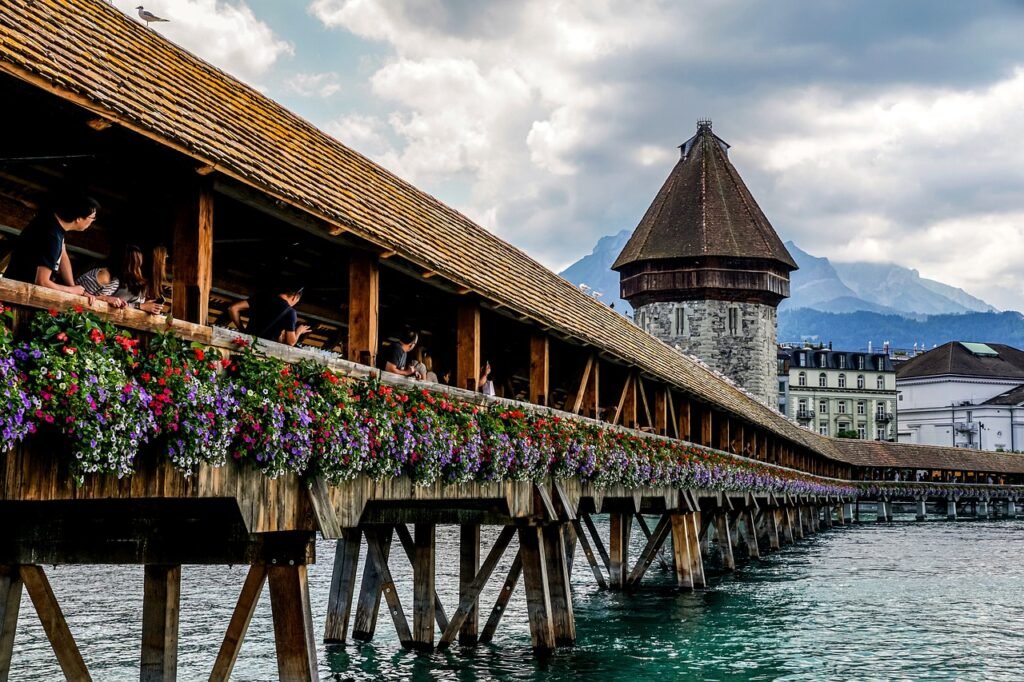
The world’s oldest still-standing truss bridge, which crosses the Reuss at an angle, serves as Lucerne’s symbol. The 200-meter-long covered wooden bridge runs diagonally and was built in the fourteenth century. Triangular paintings from the 17th century that depict historical events in Lucerne are found in the ceiling pediments. There are 30 in total, though there were many more before a fire in 1993 completely destroyed the bridge. The 35-meter tower that completes this ensemble is submerged in the water and is around 30 years older than the bridge. Although you cannot go upstairs, it is a sight to behold, and there is a gift shop on the first floor.
Rosengart Collection
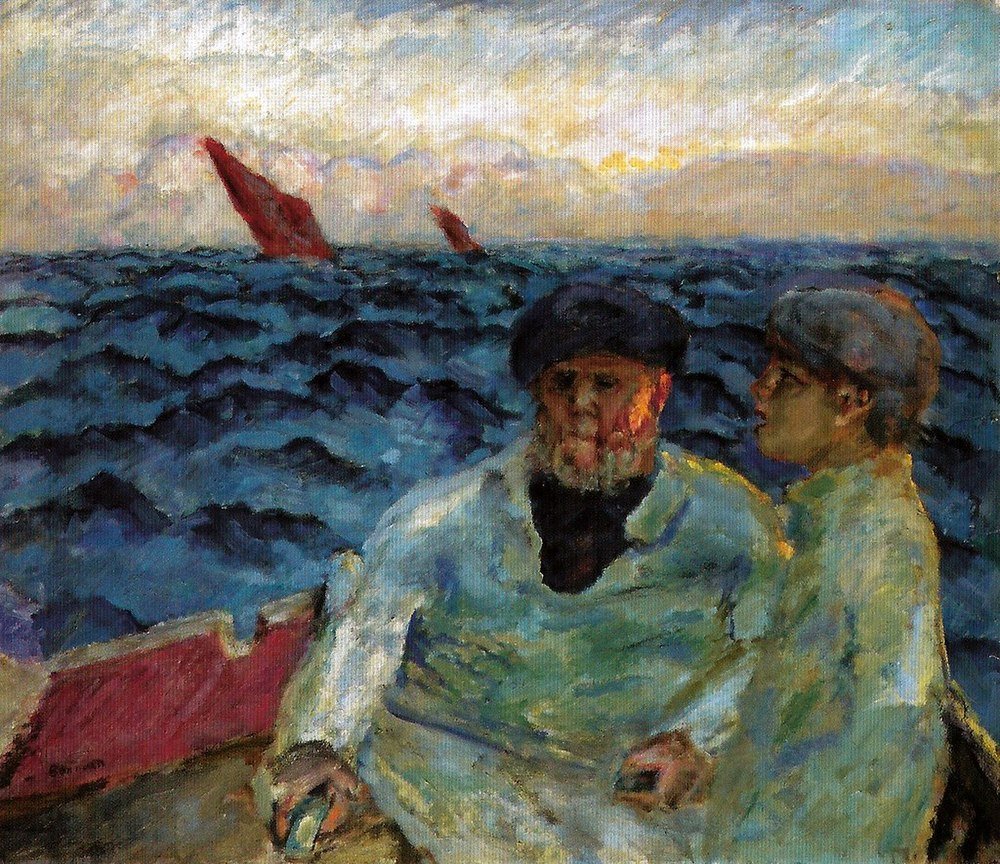
In the early decades of the 20th century, modern painters and the art dealer Siegfried Rosengart crossed paths. Along with his daughter Angela, he amassed one of Europe’s most comprehensive collections of contemporary art, which includes hundreds of pieces by famous creators like Chagall, Monet, Matisse, Miró, Braque, and Fernand Léger. The museum in the former National Bank building’s collection of works by Picasso and Paul Klee, however, is its crowning splendour and has received special attention. More than 300 items are typically on show at the museum, which Angela launched in 2002.
The Lion Monument
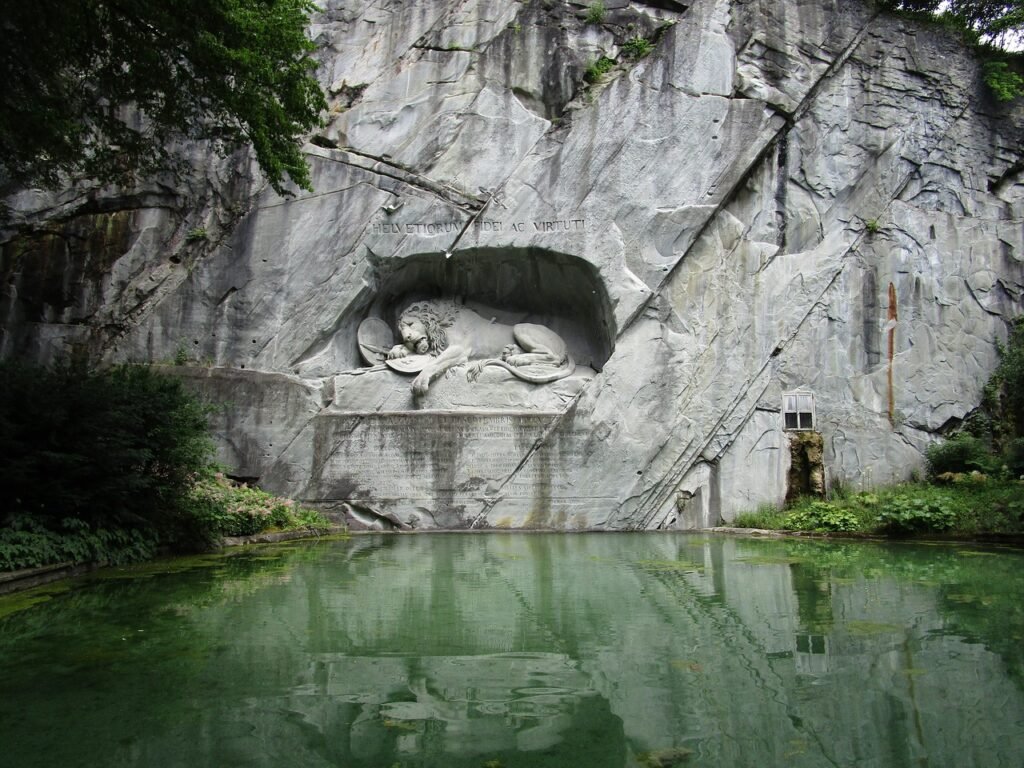
An image of a dying lion is carved into the rock of an old sandstone quarry. The monument was carved by Lukas Ahorn in the early 1820s after being conceived by Danish sculptor Bertel Thorvaldsen. The lion stands in for the Swiss Guard, which was murdered on August 10, 1792, while attempting to defend Louis XVI at the Tuileries Palace during the French Revolution. There’s rich symbolism in the work: The lion rests on top of a broken shield with the fleur-de-lis of the French royalty, and behind him is another intact shield with the Swiss coat of arms. To avoid the crowds, come early in the day.
Glacier Garden
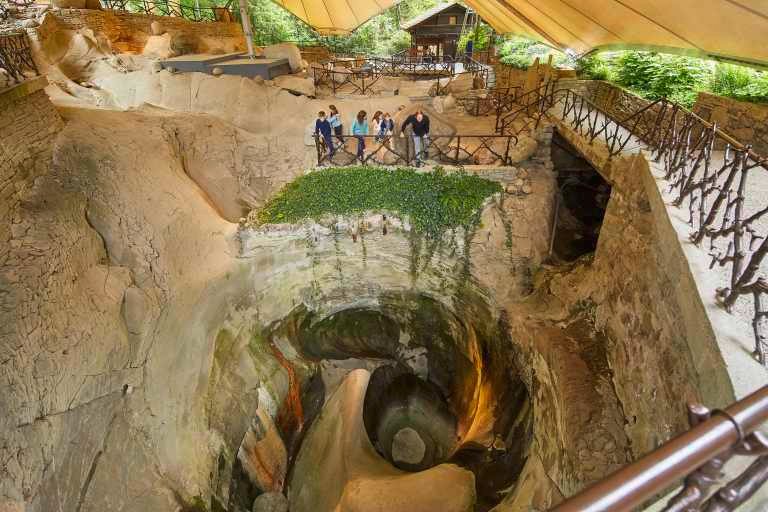
A natural location close to the Lion Monument astounded experts when it was identified in 1872. There is a collection of potholes that were created 20,000 years ago during the last ice period. The shellfish and palm frond fossils from when this location was the shore of a subtropical sea about 20 million years ago are far older than these. Along with brand-new interactive exhibitions, this collection also includes a relief model of Switzerland from the 18th century. And see if you can navigate the 90-mirror Alhambra mirror maze, which was constructed in 1896. Take the “Stone of Time” route from there to the observation tower for stunning views of Lucerne with Mount Pilatus in the distance.
Musegg Wall
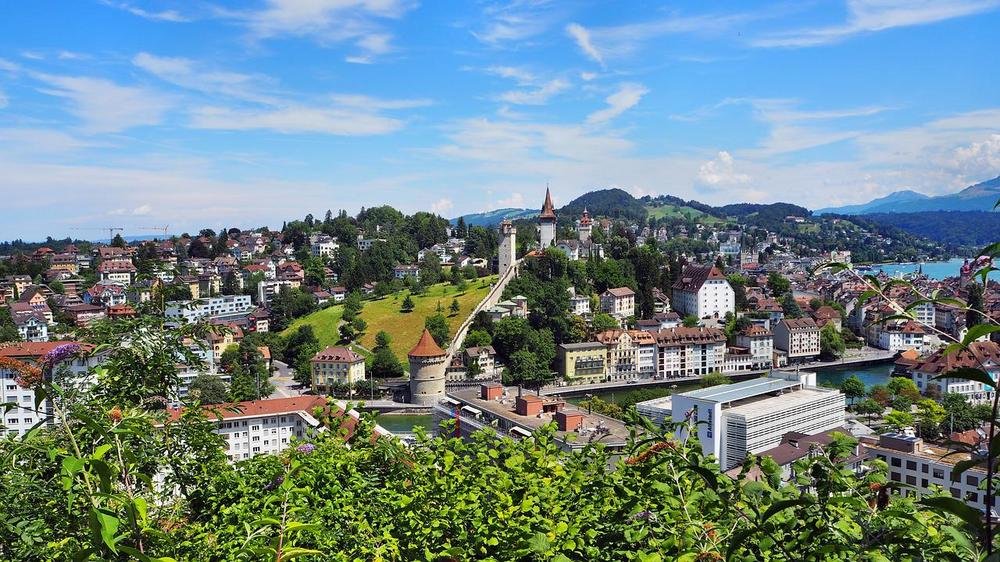
The city walls of Lucerne, as we know them now, were built towards the end of the 14th century to protect the old town on the steep slope to the north. The sight of nine enormous towers lined up in a row and separated from one another by a section of the city wall is spectacular. Four of them are reachable, including the well-known Zytturm, which houses the city’s oldest clock. This dates to 1535, and in honour of its age is permitted to chime a minute before Lucerne’s other clocks. To get a view of the city and lake, it is worthwhile to climb the other three towers.
Hofkirche
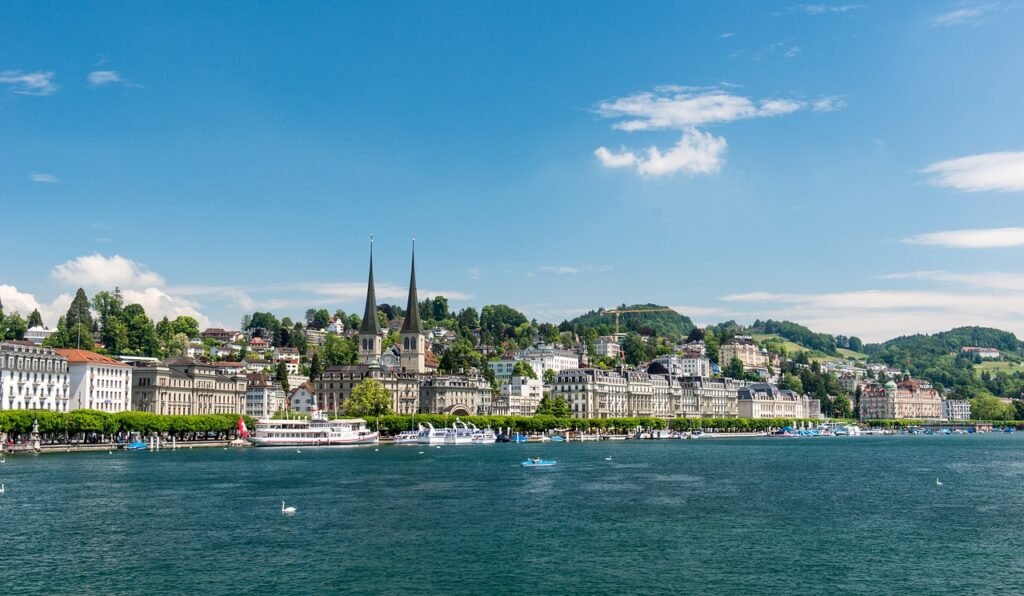
During the Thirty Years’ War in the 17th century, the historic Romanesque basilica in Lucerne was destroyed by fire. As a result, the city constructed its new church in the 1630s while the conflict was still raging; it was one of the very few churches built north of the Alps during that time. Although the interior ornamentation and the two towers are remnants of the original church, the exterior architecture is in the late Renaissance style. The multicoloured Maria-End-Altar, which was built in the 1500s and was saved from the fire, is located on the north side of the nave. It depicts the Apostles surrounding a dying Mary. From the time of the 17th-century rebuild check out the black marble high altar and the exceptional carved wooden choir stalls.
Richard Wagner Museum
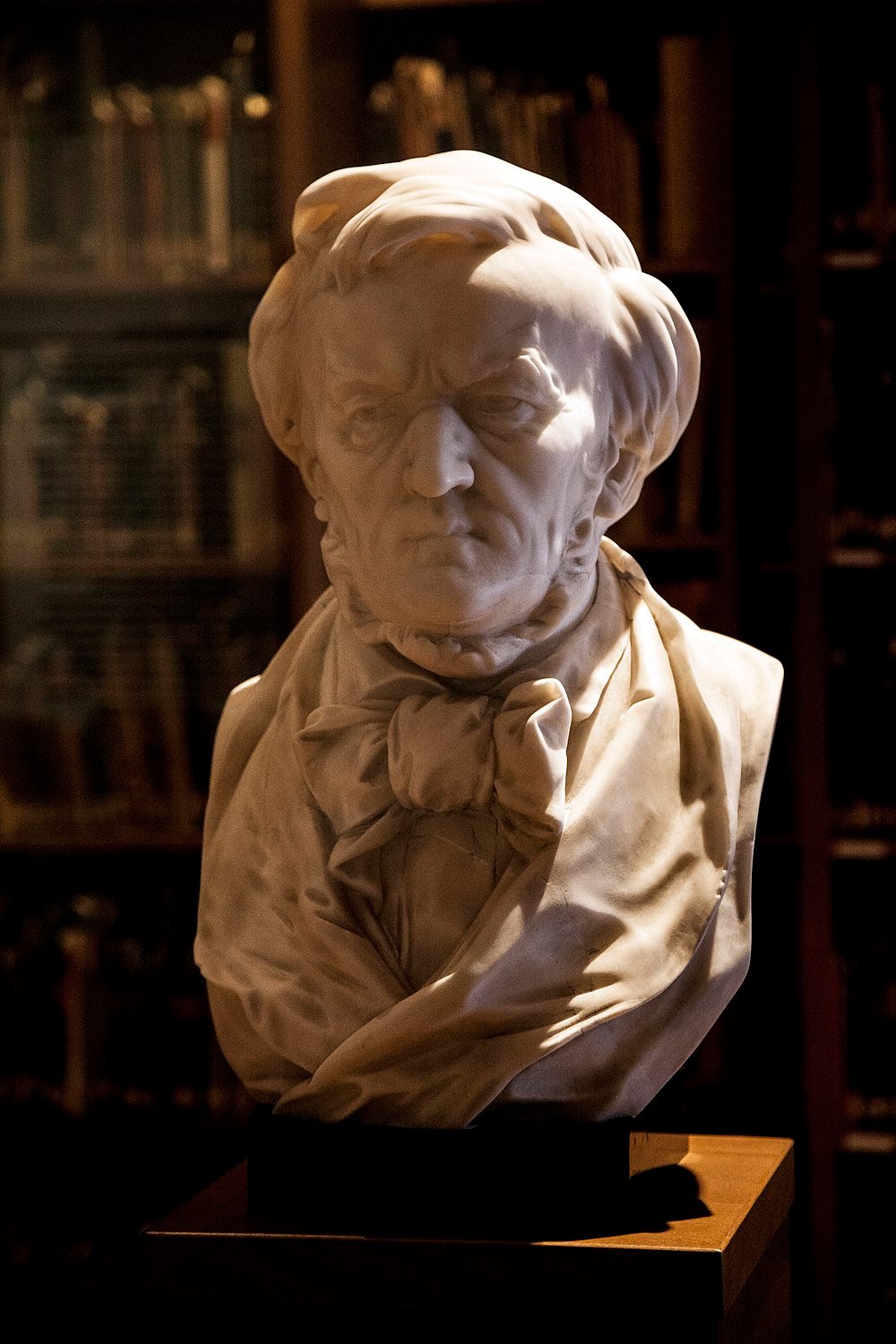
After getting into problems due to his affairs, Ludwig II ordered Richard Wagner to leave Munich in 1865. In the Tribschen neighbourhood of Lucerne, the monarch placed him in a manor house in a park with a lake view. Wagner started writing Götterdämmerung and Die Meistersinger von Nürnberg while residing in the home for six years. Wagner and his time in Lucerne are now commemorated in the house’s museum. You can explore through correspondence, musical manuscripts, furniture, artwork, and photos. But the Erard piano, where he created his greatest works, is the best part.
Jesuit Church
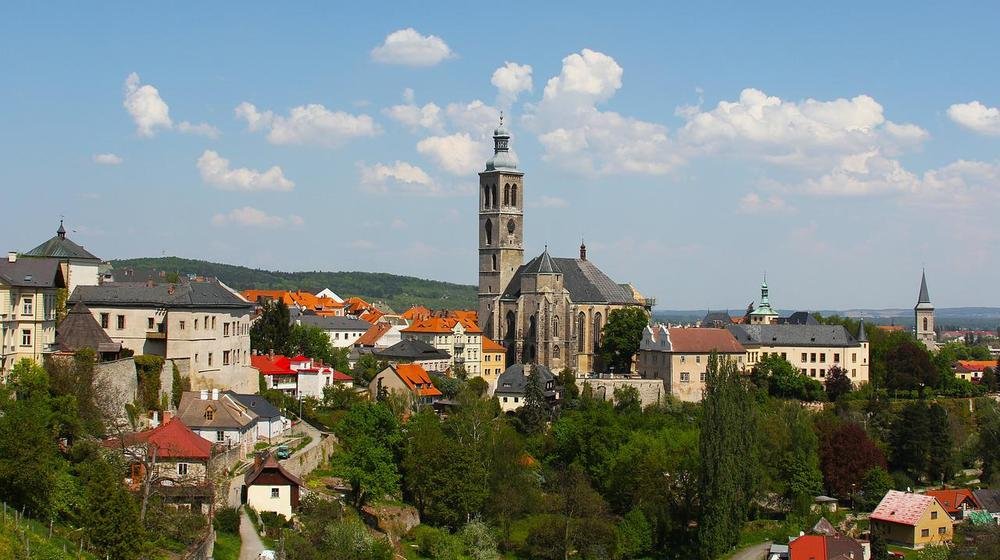
In contrast to protestant cities like Geneva and Zürich, this church, which was constructed only a few decades after the Hofkirche, has a striking Baroque design. The Jesuit Church, which was built between the 16th and 17th centuries and dedicated in 1677, was created by architects from Austria and Italy. The side chapels’ elaborate stuccowork inside is the oldest representation of the important German Wessobrunner School. Brother Klaus, a former hermit who is now a saint, is honoured in the second side chapel, where you can also view his 15th-century garb.
Lucerne Culture and Congress Centre
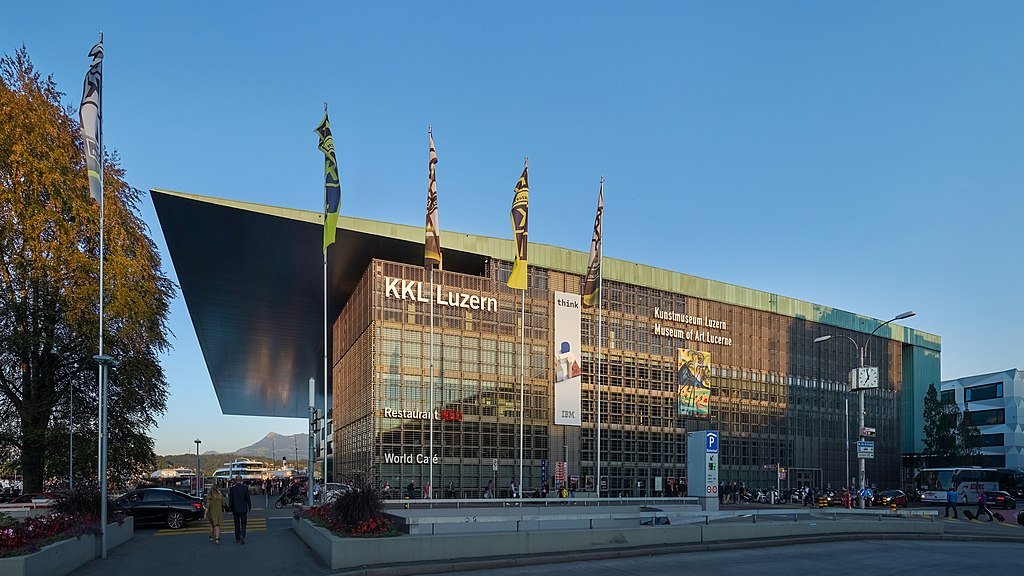
A stunning example of contemporary architecture can be found where the Reuss exits the lake. Between 1995 and 2000, the Jean Nouvel-designed Lucerne Culture and Congress Center came to be. The massive flat roof protruding over the shoreline is the first thing that will draw your attention. There is a structure underneath it that is dominated by a first-rate concert hall with 1,800 seats and the best acoustics imaginable. There is also an art museum within with pieces dating from the Renaissance to the present. The uncomplicated World Café, which serves ice cream in the summer and hearty soups in the winter, is open day and night for coffee and light fare.
Reuss River Sights
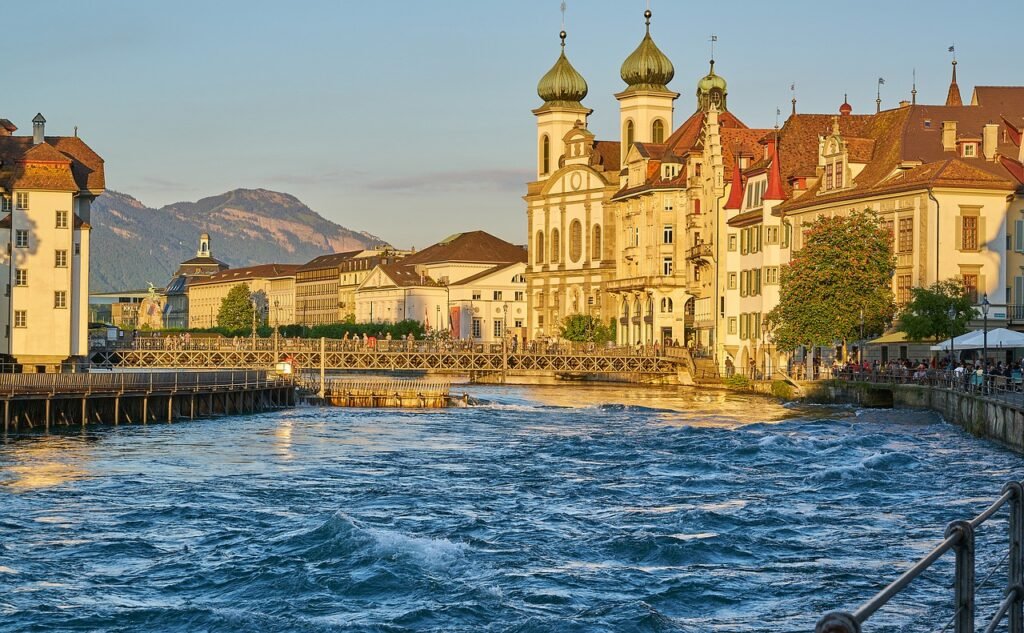
A second medieval bridge in Lucerne is located downstream, up against the western edge of the Old Town. Similar to the Chapel Bridge, the 15th-century Spreuer Bridge has a roof, a truss construction, and more 17th-century paintings on its ceiling pediments. These paintings, which were created between 1616 and 1637, each include a Danse Macabre and come with a description and information about the donors. Carry on downriver for a moment and you’ll come to the Nadelwehr (Needle Dam). When this barrier was built in 1852 to preserve the lake’s level, the river’s past flooding was relegated to history. It’s a cleverly straightforward device that controls the flow of the Reuss by adding or removing wooden planks (needles). R
Bourbaki Panorama

On Löwenplatz, there is a tourist attraction that has been open for approximately 140 years, close to the Lion Monument and Glacier Garden. At the beginning of the 1870s, the Swiss artist Édouard Castres depicted a panoramic view of a pivotal event in the France-Prussian War: The defeated French army makes its way into Switzerland for safety through a wintry environment. The 112 by 10-meter painting is on exhibit in a rotunda. Castres could draw from first-hand memories because he had volunteered with the Red Cross throughout the war. The Bourbaki Panorama is home to a modest museum that provides background information on the artwork and the conflict.



